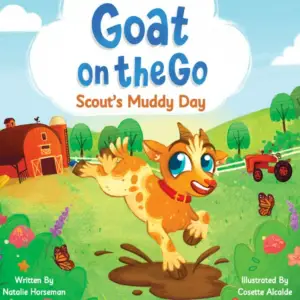Unraveling Trauma in The Murder Next Door: A Graphic Memoir
There’s a certain magnetism to stories steeped in real-life experiences, especially when they navigate the choppy waters of trauma and the human psyche. The Murder Next Door by Hugh D’Andrade captivated me not only due to its gripping premise but also because I knew I was diving into a poignant reflection that many of us can relate to on some level. The stark juxtaposition of childhood innocence with a horrific reality is, at its core, a deeply human experience that has taken root in my own reflections on fear and numbness.
At its heart, The Murder Next Door recounts a day that irrevocably alters young Hugh’s life. The unsettling tale begins in the casual banter of childhood—two boys arguing, a seemingly benign encounter that spirals into horror as Hugh uncovers the truth behind their words: their mother has been murdered. The raw depiction of that moment, combined with the chilling realization that Hugh has just walked into a crime scene, sets the tone for the emotional turmoil that unfolds.
The memoir not only addresses the immediate shock but also delves deeper into the long-lasting impacts of trauma. D’Andrade offers us a lens into the complexity of his feelings growing up in the aftermath: "Normal feels like just this low-level, shitty anxiety and unease." This sentiment resonated with me, as I’ve often felt that sense of being "stuck," waiting for healing to arrive while grappling with unexpressed fears. Hugh’s journey illustrates how we often sidestep conversations about trauma, opting for silence even when an overwhelming weight lingers, and that choice becomes a haunting part of his narrative.
D’Andrade’s writing style, interspersed with flashes of vivid imagery and poignant reflection, draws the reader in like a warm, haunting embrace. The graphic memoir format enriches his storytelling, allowing for a compelling visual narrative that echoes the emotional intensity of his experiences. The pacing is well-crafted; it mirrors the ebb and flow of Hugh’s thoughts, alternating between stark memories and therapeutic revelations in adulthood. The interplay of past and present creates a tapestry that is both intricate and deeply personal.
One of the most striking aspects of the memoir is Hugh’s acknowledgment of the collective silence shared by neighbors and friends: "We all decided it was best to not talk about it." This unspoken consensus left Hugh isolated, a feeling that many readers might find familiar. It made me reflect on how often we sidestep hard conversations, but D’Andrade gently encourages us to confront our shadows instead.
In conclusion, The Murder Next Door is a heart-wrenching yet beautiful exploration of childhood trauma, memory, and the complexities of moving forward. This graphic memoir will resonate with anyone who has grappled with loss or silence in their lives, especially those who appreciate introspective narratives. It’s a meaningful read that invites us to confront our own histories while offering solace in the messy journey of healing. If you’re searching for a book that intertwines graphic artistry with emotional depth, look no further—Hugh D’Andrade has crafted something truly special.
Discover more about The Murder Next Door: A Graphic Memoir on GoodReads >>






